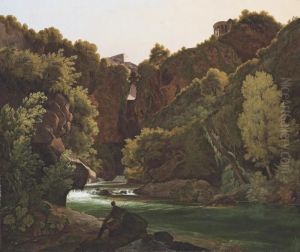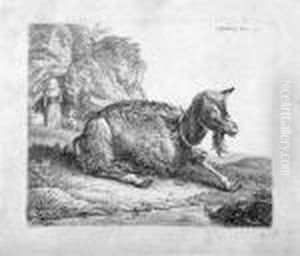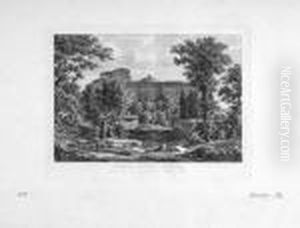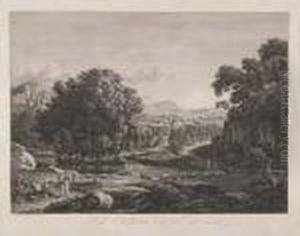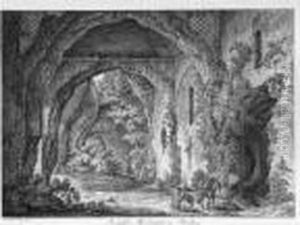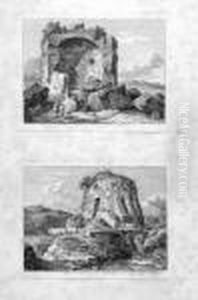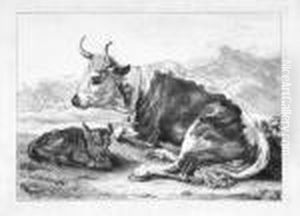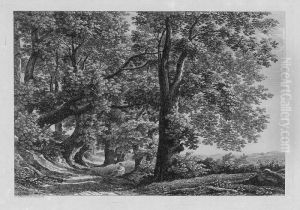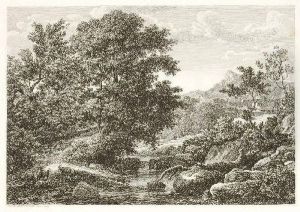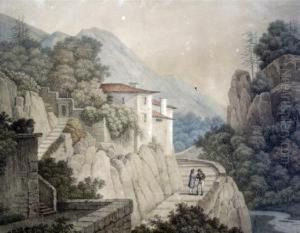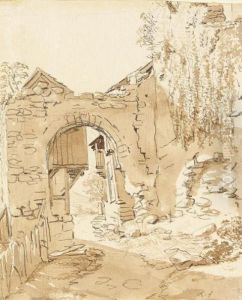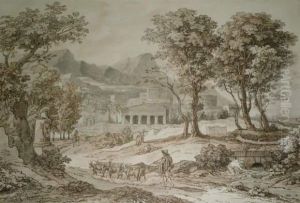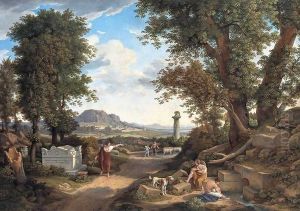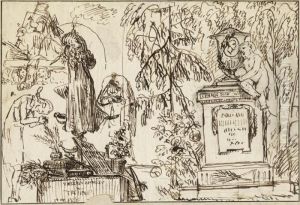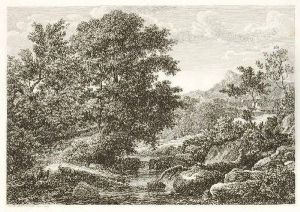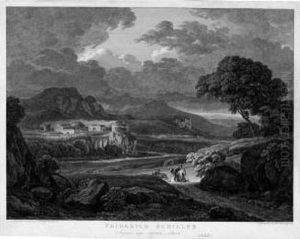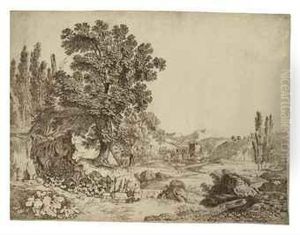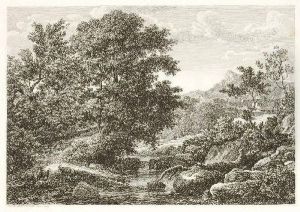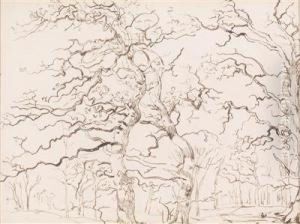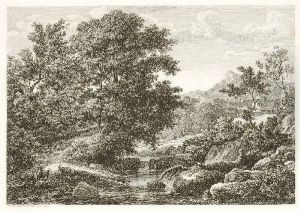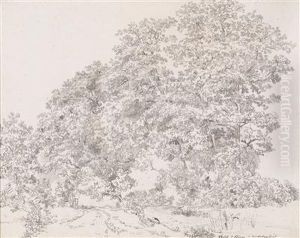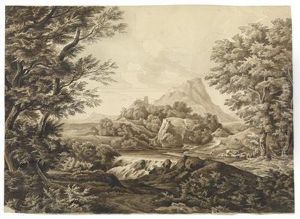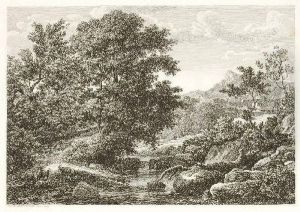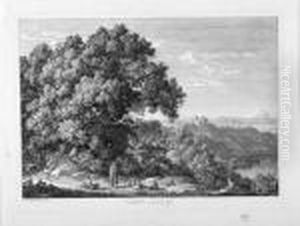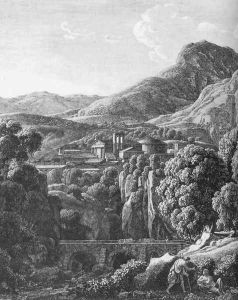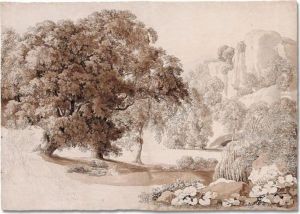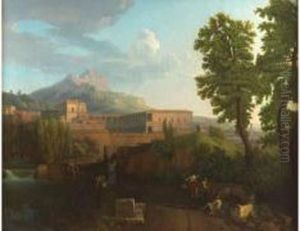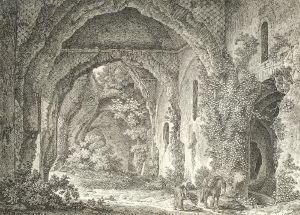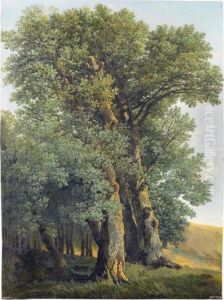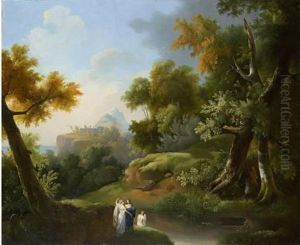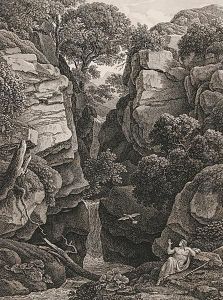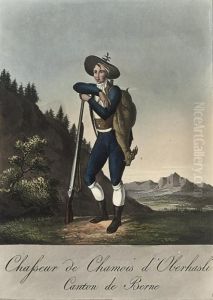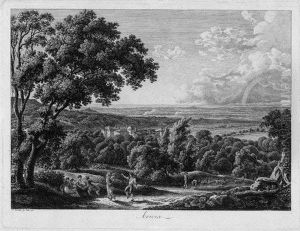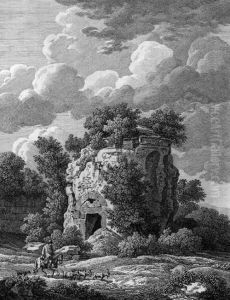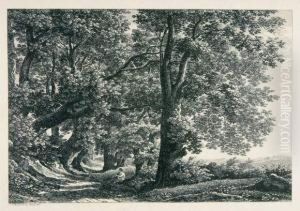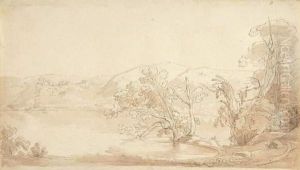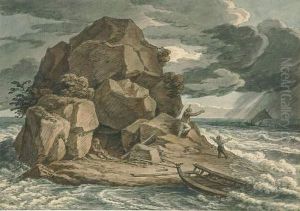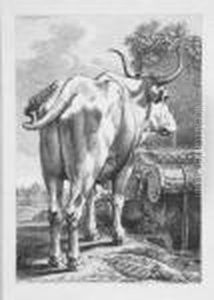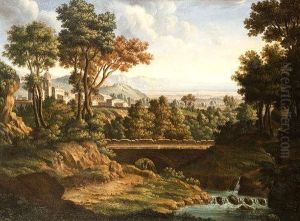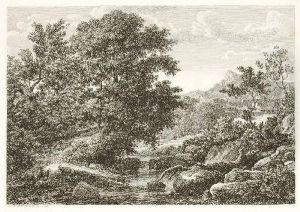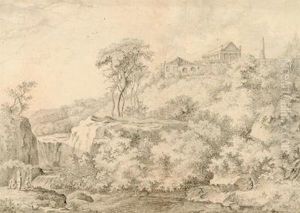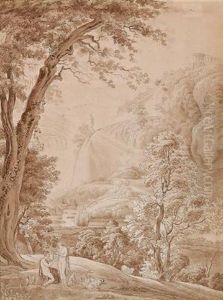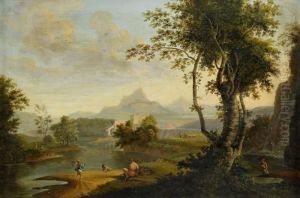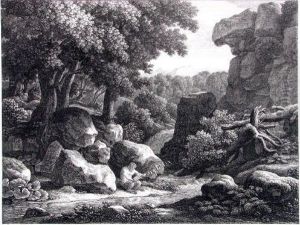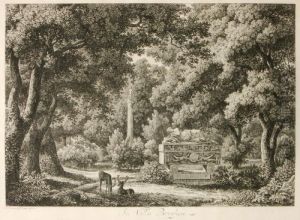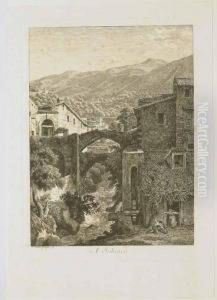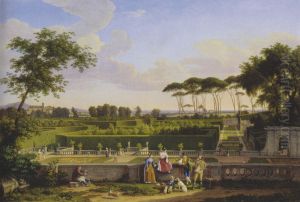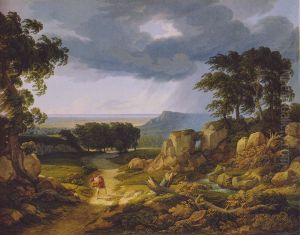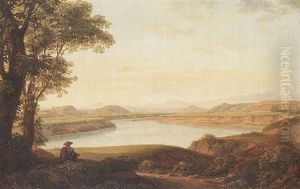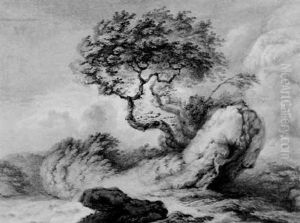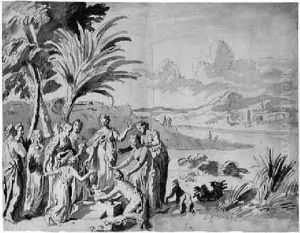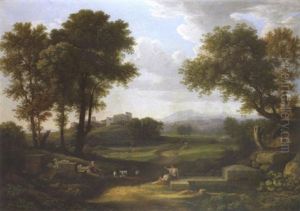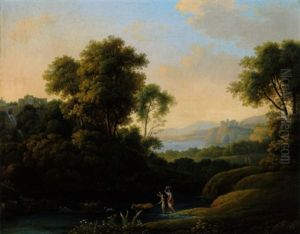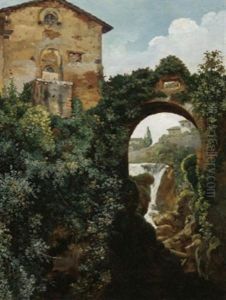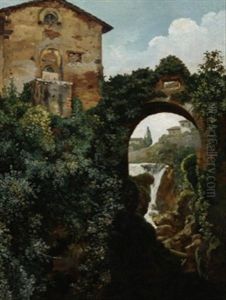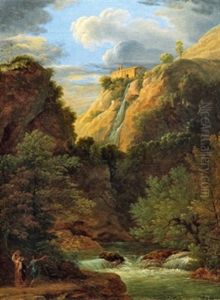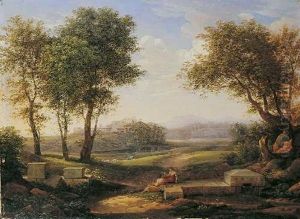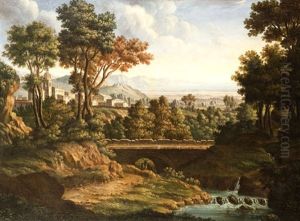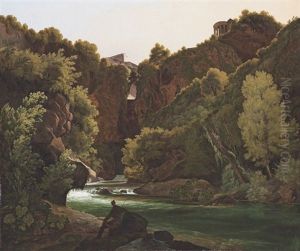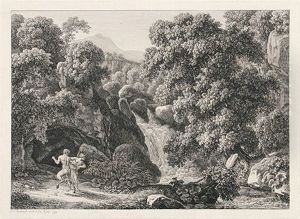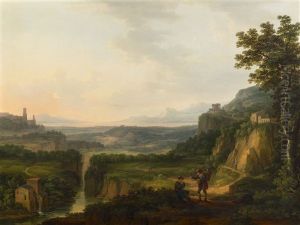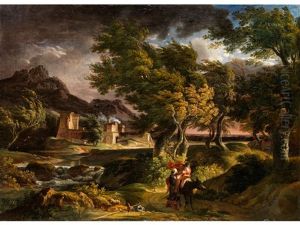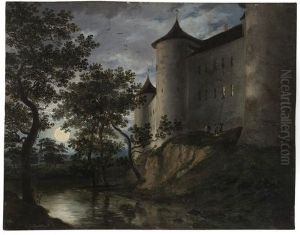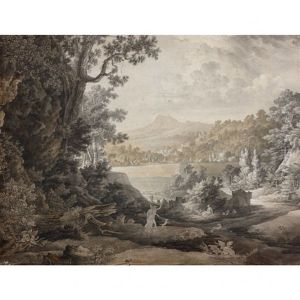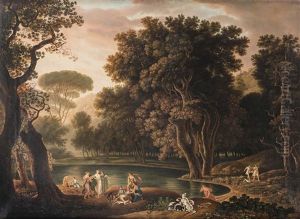Johann Christian Reinhart Paintings
Johann Christian Reinhart was a German painter and engraver who was born on January 24, 1761, in Hof an der Saale, Bavaria. He is particularly noted for his landscape paintings and his significant role in the development of the German Romantic movement. Reinhart began his artistic education at the Academy of Fine Arts in Nuremberg and later moved to Rome in 1789, which became his home for the majority of his life.
In Rome, Reinhart became associated with a group of German artists known as the 'Deutschrömer', or 'German-Roman', artists. His work often depicted the Italian countryside and was characterized by meticulous attention to detail, a trait he shared with other German Romantic artists. He was deeply influenced by the classical landscape tradition of artists such as Claude Lorrain and Nicolas Poussin, which is evident in his balanced compositions and the serene quality of his depictions of nature.
Reinhart's landscapes were not just topographical representations; they also conveyed a sense of the sublime and the spiritual, which was a common theme in Romantic art. He often included ancient ruins, which served as a reminder of the past and the transient nature of human achievements in contrast to the timeless beauty of nature. His engravings and etchings, in particular, were highly regarded and contributed to the revival of these techniques in German art at the time.
Throughout his career, Reinhart also took on students and played a key role in the artistic community in Rome. His influence extended to his contemporaries and the next generation of landscape painters. Despite living in Italy for most of his life, Reinhart's work remained rooted in German artistic traditions and he is often considered one of the leading figures in German landscape painting of the 19th century.
Johann Christian Reinhart continued to work and exhibit his art until his death on June 9, 1847, in Rome. His legacy lives on through his contributions to Romantic landscape painting and the artists he influenced during his lifetime.
